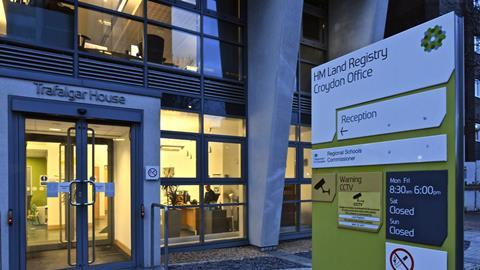Registry says it is putting customers first as it unveils initiatives to explore how ‘innovative use of technology could revolutionise the land registration and property buy-sell process’
There is broad consensus that the home-buying and selling process in England and Wales could be simpler and faster. Cheaper? The jury’s out.
When HM Land Registry last week published a ‘customer charter’ with these aims, reaction among conveyancers was sceptical. ‘Would be interesting to hear how the LR think that conveyancing may become cheaper,’ commented Rob Hailstone of Bold Legal Group. ‘Hopefully not by conveyancers reducing their already ridiculously low (for the work they do and the responsibility they carry) fees?’
Land Registry’s head of customer policy Andrew Robertson was quick to dispel the suggestion: ‘What we’re saying is that by working together to better meet our collective needs we can create efficiencies and savings in conveyancing and registration for all concerned,’ he posted on the Gazette website. ‘One aspect of working together will be to improve the quality of applications for change.’
The conveyancing process needs to be dragged into the 21st century. But that does not mean we should run before we learn to walk, which is what Land Registry may be in danger of doing
Announcing this month that Land Registry will be ‘exploring the benefits’ of blockchain technology, Graham Farrant, chief executive, says its ‘ambition to become the world’s leading land registry for speed, ease of use and an open approach to data requires HM Land Registry to be at the forefront of global innovation in land registration’.
Land Registry’s research and development initiative, Digital Street, aims to understand ‘how the innovative use of technology, such as blockchain, distributed ledgers and smart contracts, could revolutionise the land registration and property buy-sell process’. The project has already created a digital register for a small selection of properties, which is a first step towards establishing a register that is fully machine-readable and able to be updated instantly. In the next phase, software supplier Methods will be working with the Corda blockchain platform from R3.
But first, the registry aims to reduce the average rate for requisitions (requests to applicants for further information) from 20% to 15%, and reduce the previous year’s target for the average cost per register update by 3% in real terms.
Robertson said: ‘Every time you receive a requisition it costs you or your firm the time to respond to it. And there’s also the cost to us. In 2017/18 we needed to raise over 4,000 requisitions every day, costing us between £2m and £3m in staff time and resource. Much of this cost to both of us is avoidable.’
The registry already has plenty on its plate with one of the public sector’s largest IT programmes, to create a central register of local land charges, relieving local authorities of the duty (and part of the income from property searches). Conveyancers will still need to go to local authorities for CON29 enquiries.
In theory, 26 local authorities are due to be on the system this year. This now looks optimistic. To date, three have made the move: Warwick, Liverpool and, as of last week, City of London Corporation.
This is a significant step, however. Richard Steele, corporate spatial data manager at the City of London Corporation, said: ‘Previously, our local land charges data was held in a mixture of paper and digital systems. Before migrating all the information to HM Land Registry’s digital register, we have digitised and accuracy-checked all the data. This helps to reduce business risk for future property transactions in the area. By taking part in the process the turnaround times for local land charges search results for properties in the City will be reduced from days to seconds.’
Critics, including the Law Society, have questioned the need for centralisation and raised concerns that historic data currently held by local authorities would be lost.
Even if 26 local authorities’ local land charges are transferred to the national register on schedule, the process will not be complete. ‘The timing of future phases has not been decided yet and will be subject to decisions by ministers. Because of the scale and complexity of the service change, as considered in our regulatory impact assessment, this data migration could take up to seven years,’ the registry says.
Has the registry bitten off more than it can chew? Many conveyancers will remember its last attack of hubris, the e-conveyancing project abandoned in 2007.






























10 Readers' comments